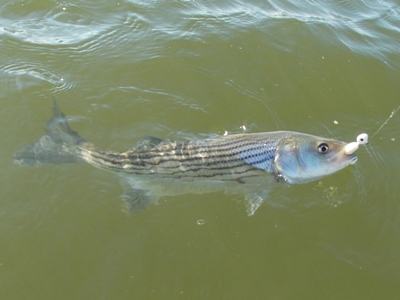The Chesapeake Bay is a major nursery for Atlantic striped bass. The striped bass, also known as “rockfish” is one of several anadromous fish that pass through the Chesapeake Bay Watershed.
In early spring, adults move up the bay into spawning areas. After spawning, most adults exit the bay and return to coastal areas of the Atlantic Coast. A few post-spawn adults remain in the Chesapeake Bay and its tributaries during the summer season.
After hatching, young fish feed and grow in shallow estuaries until they are large enough to leave the bay. As adults, they live along the coast from New England to the Carolinas.
During the late fall, schools of adult striped bass return to the Chesapeake Bay to feed on baitfish. As water temperatures continue to decrease, the migrating striped bass once again exit the bay in search of warmer water.
Striped Bass Research
The Maryland Department of Natural Resources (DNR) conducts an annual young-of-year (YOY) striped bass survey, which tracks reproduction of the species in the Chesapeake Bay. Survey sites are located in the four major spawning areas: Choptank, Nanticoke, and Potomac rivers, and the Upper Chesapeake Bay.
MD DNR has monitored the reproductive success of striped bass and other fish species in Maryland’s portion of the Chesapeake Bay since 1954.
In Virginia waters, the Virginia Institute of Marine Science (VIMS) conducts a yearly Juvenile Striped Bass Seine Survey. Young of the year striped bass are counted at in the Rappahannock, York, and James River watersheds.
Related Information
